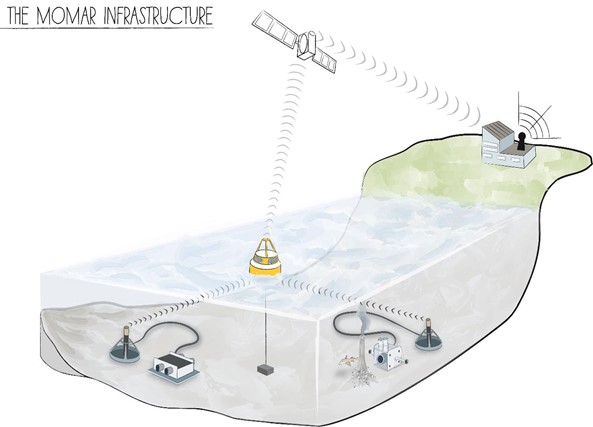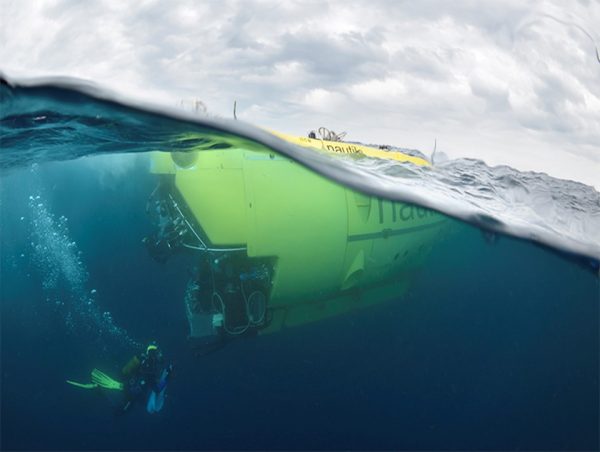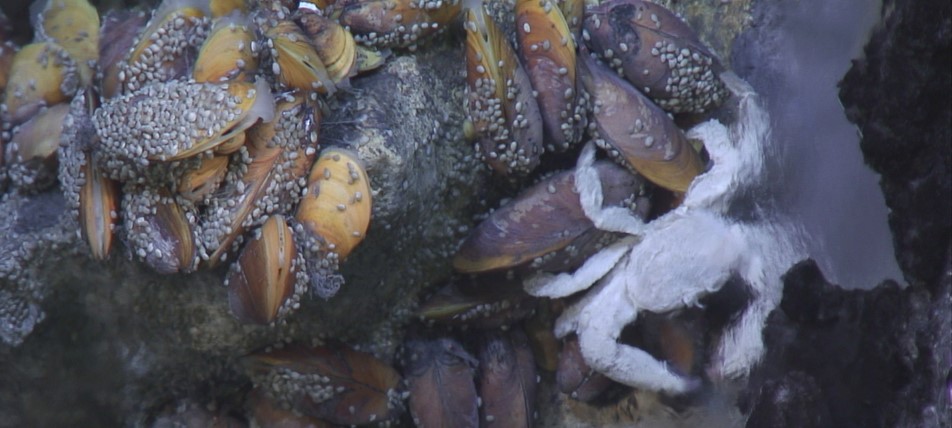The EMSO-Azores crew is ready to raise anchor and cast off again! After celebrating the observatory’s 10 years anniversary in 2020, this year marks the beginning of the second decade of observations of the 1700 m deep hydrothermal vent field Lucky Strike!
EMSO-Azores (https://www.emso-fr.org/EMSO-Azores) is a non-cabled multidisciplinary observatory devoted to the long term integrated study of mid-ocean ridge processes, from the subsea floor to the water column. It is part of the EMSO-ERIC European network (https://emso.eu/). The observatory includes two sea monitoring nodes (SEAMON) providing power and communication to a number of instruments deployed on the seafloor, a surface buoy insuring data transfer to land and an oceanographic mooring. Every year the entire array is brought to the surface where the engineering team download large volumes of data from the instruments. The sensors are then cleaned, checked, repaired if needed, set-up and calibrated for another year of observations!
If you want to know more about the research conducted at Lucky Strike and the main scientific results, check our groundbreaking results (https://www.emso-fr.org/EMSO-Azores/Ground-breaking-results) on the webpage.
This year we will be sailing on the French research vessel L’Atalante leaving from Toulon, France, on May 15th. After 2 COVID tests and a 10-day transit to the Mid-Atlantic Ridge off the Azores, will be ready for a 21-day mission dedicated to the maintenance of the observatory and its associated sampling program, using the human operated vehicle Nautile. We will return to Brest, France, on June 21st after a 6-day transit. The MoMARSAT 2021 oceanographic campaign is jointly carried out by Ifremer and Institut de Physique du Globe de Paris (IPGP-CNRS /INSU). Some of the data acquired will feed the iAtlantic European project (https://www.iatlantic.eu/) by extending our time-series of environmental variables that are processed and by doing some lab experiments.
Finally, we are keen to involve once again external partners in the adventure! In 2020, we started a collaborative project with a local radio and a social center in Brest. In this project, combining media education and scientific mediation, 8 voluntary kids will produce a radio broadcast on the deep sea, more particularly vents and deep-sea minerals. The objective is to train the kids in radio production – interview, recording, audio editing – but also introduce them to deep-sea ecosystems – their diversity, uniqueness and the societal challenges they are facing. To this end, we will organize video conferences from the ship for several interviews not only about the science but also the different jobs and life onboard. The kids will lead the way!
Join us and follow the adventure on our Facebook page: https://www.facebook.com/CampagneMomarsat

The EMSO-Azores infrastructure showing the two bottom Seafloor Monitoring Nodes (SeaMon) and the surface Borel buoy. Copyright Ifremer.

The human operated vehicle Nautile will insure the maintenance of the EMSO-Azores observatory during the Momarsat 2021 cruise. Copyright Ifremer.


